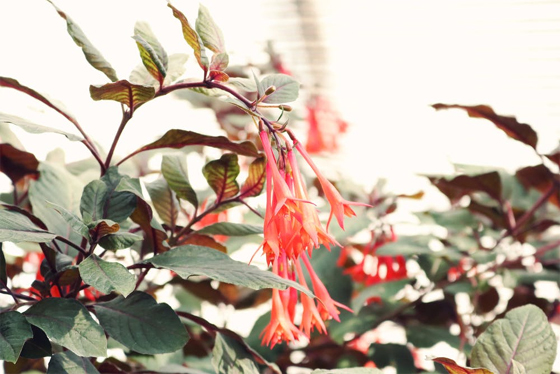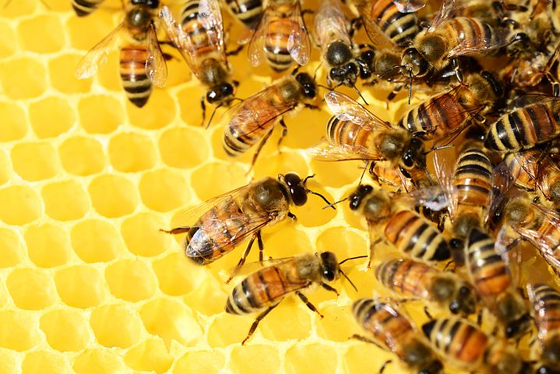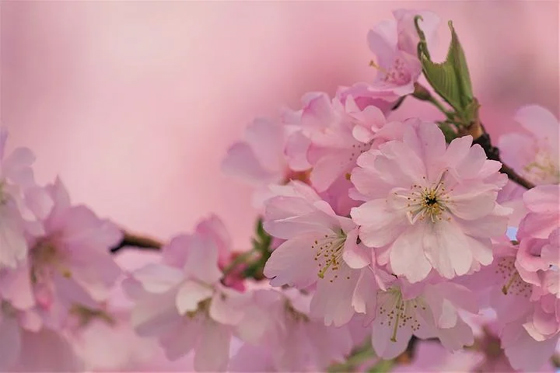BEE SURVIVAL BATTLE
The bee survival battle is real and has been going on for some time now. There is a real fear that the worldwide decline of bee populations may be largely due to our changing climate.
The survival of these insects is crucial to our own survival and our planet’s health because these amazing pollinators are responsible for about a third of all the food we eat.
There are more than 21,000 known species of bees worldwide. Unlike
honeybees and bumblebees which have a social structure, 90% of native bees live solitary lives.
They don’t live in colonies, build hives, make honey or wax, and/or form
swarms. About 70% of them nest underground, and the remaining 30% nest in
cavities or holes in wood or hollow broken stems. The solitary bees tend to
have a short lifespan leading to a short flying range from home. They spend
most of their lives in their nesting site hibernating over the winter.
North America is home to 4,000 species of bees, including bumblebees, carpenter bees, and leaf cutter bees. They come in colors ranging from rich hues of yellow to vibrant blues and greens.
Carbon emissions appear to be resulting in temperature extremes that are causing problems for bee survival. Some of these include:
- Habitat loss.
- A rise in parasitic mites.
- A rise in predators that thrive in warmer temperatures.
- Increased pesticide use to deal with new pests.
- Shifting winds which make bees less effective.
- Colony Collapse Disorder.
BEE COLONY COLLAPSE DISORDER
According to the EPA, there have been many theories about the cause of Colony Collapse Disorder, but the researchers who are leading the effort to find out why are now focused on these factors:
- Increased losses due to the invasive varroa mite (a pest of honey bees).
- New or emerging diseases such as Israeli Acute Paralysis virus and the gut parasite Nosema.
- Pesticide poisoning through exposure to pesticides applied to crops or for in-hive insect or mite control.
- The stress bees experience due to management practices such as transportation to multiple locations across the country for providing pollination services.
- Changes to the habitat where bees forage.
- Inadequate forage/poor nutrition.
- Potential immune-suppressing stress on bees caused by one or a combination of factors identified above.
THE HONEY BEE
Of all the species of bees in the world, only those members of the genus Apis make honey. There are 11 known species of honeybees who live in highly structured social groups where each bee has a role to play.
Types of Honey Bees
There are 3 types of honey bees:
- queens.
- workers.
- drones.
There is only one queen per hive and she is usually the largest and longest-living inhabitant of the hive.
The worker bees are all females and the only bees with stingers. Any time a bee stings, it will die, but it will leave behind a banana-like scent that warns the other worker bees of danger.
Interestingly, workers are genetically identical to the queen, but only the queen can lay eggs. And she can release over 1,000 eggs each day for years.
The drones are all male and their only function is to fertilize the queen during a once-in-a- lifetime mating flight. The drones die after mating.
The Term 'Honeymoon' and The Honey Bee
It is possible we owe honeybees for the term ‘honeymoon.’ Honey was an ingredient in the earliest known alcoholic beverages including mead, a fermented honey drink. Mead was very important to the Nordic rites of marriage as early as the 5th century. The practice of newlywed couples to consume large amounts of mead during the first full moon cycle, or month, of marriage is one of the several proposed origins of honeymoon’s etymology.
Aging Backwards
Some honeybees also have the amazing ability to age backwards! When there is a lack of young worker bees, older ones can revert to their more energetic, younger selves and continue the work. Researchers are currently investigating this phenomenon for a possible application in age-related dementia in humans.
BEES AS POLLINATORS
Bees are extremely efficient pollinators. They are essential to plant diversity. When crops are grown without pollinators, fruits such as avocados, blueberries, and cucumbers show a dramatic decrease in yield and weight.
As weather patterns shift, may animal species will move to more ideal climate conditions than their previous habitat. But it appears that bees are not adapting well to shifting temperatures. Seasonal changes in some areas, such as flowers starting to bloom earlier could cause trouble for both wild and farmed crops.
The declining population of bees can cause the cost of over 130 fruit and vegetable food plants to go up in price considerably.
THERMOREGULATION
Bees have the ability to regulate their body temperature, called thermoregulation. Bees are cold-blooded like all insects, so their body temperature is usually similar to their surrounding environment. However, within the confines of the hive, where the new brood lives and develops, the bees maintain a steady temperature of around 92-93 degrees F. The bees are able to use their wings to fan hot air out of the hive to cool an area or vibrate their flight muscles to heat it.
As the climate changes and new predators come their way, certain bee species are able to use their hive-heating techniques to defend their hives. For example, when predators cross their threshold, Japanese honeybees have been known to pounce on the invaders and create a giant ball of heat around them that cooks the invaders alive.
HOW BEES AVOID DETECTION
Bees avoid detection by using the same statistical technique called geographic profiling that criminologists use to study repeat offense crimes such as serial killings and burglaries. Generally, repeat offenders do not commit crimes close to their homes but remain close enough for convenience. The foraging patterns used by bees appear to be the same and as predictable as those used by humans.
When foraging, bees create a distraction zone, leaving flowers closest to their nest entrance alone and feeding further away from the hive. These bee patterns are now used by criminologists for insights into how to refine current geographic profiling methods.
BEES CAN REMEMBER HUMAN FACES!
Yes, though their brains are exceedingly small, bees are able to pick out individual features on human faces and can recognize them during repeat interactions. Scientific studies have been done to prove this fact.
This perception of bees helps them to recognize each other and also helps them to recognize and return to flowers that produce more pollen.
IS IT TOO LATE TO SAVE THE BEES?
No, it is not too late. There is much we, as individuals, can
do. Your own backyard may be the best place to start. If you want to encourage
pollinators in the yard, look for the good old-fashioned choices that once
cheered up outdoor spaces.
- Lilacs. These are the first choice for bees. Their beauty and fragrance are perfect for the suburban yard. They need a well-drained location with plenty of sun and space. The bees love the nectar.
- Honeysuckle. This plant is great for decks and patios. It comes in both bush and climbing varieties. Hummingbirds and honey bees love it. Just beware that the bush can grow to a massive size so give it lots of space
- Sedum, also known as Live Forevers. This plant is very easy to grow. Just find a sunny spot for it and by late summer the blossoms will be covered with butterflies and bees. If you have an out-of-the-way sunny spot, try letting some weeds grow lightly around the sedum for more butterflies.
- Bee Balm is a plant native to North America. It was one of the first flowering plants written about in the 1500s. The purple Bee Balm variety is one of the most cultivated species of Bee Balm. Bees love it as do butterflies and hummingbirds. Bee Balm loves moist sunny ground and looks very good in a mass planting with its shaggy red and purple flowers on 4-foot stems.
As a general rule, plant more wildflowers, use pesticides that do not harm bees, and apply them before flowering begins. Bees also get their nectar from trees that blossom and the leaves and resin provide nesting materials.
If you do not have access to a backyard area, perhaps you can set up or join a community garden or even a community rooftop garden. Window boxes, flowerpots, and planters can also contribute to bee-loving plants.
If you have never thought of having your own beehive, now may be the time to start. There is an infinite amount of information available on the internet on what is required to start and maintain your own beehive.
There are also many organizations devoted to joining the bee survival battle. One such organization is the Bee Conservancy. This page on their website has very useful information. You can get much information and/or make a donation.
Top of Bee Survival Battle
Back to Articles
"The Cleanest Clean You've Ever Seen."
by
ABC Oriental Rug & Carpet Cleaning Co.
130 Cecil Malone Drive Ithaca, NY 14850
607-272-1566





















